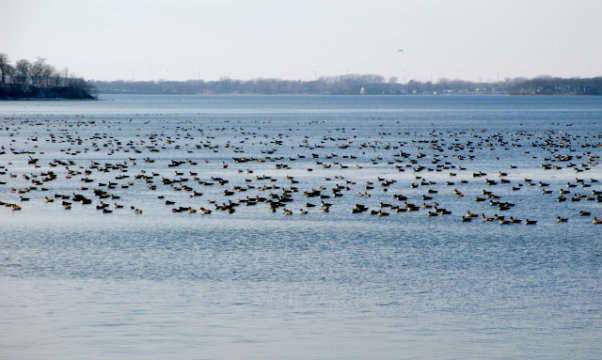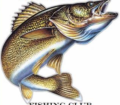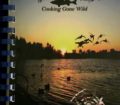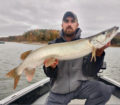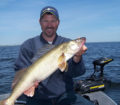By Steve Weisman
Outdoor Writer
Pro-staff seminars at the recent “Shop With The Pros” event held at Kabele’s Trading Post all revolved around a key word first coined years ago by ice fishing guru Dave Genz: mobility.
Why mobility? Well, it’s all about being willing to move to find the fish rather than sitting and waiting for the fish to show up. For Ice Team Pro-staffer Kevan Paul, who runs the Paul’s Fishing Guide Service, he is a true disciple of the Genz philosophy. “I am a run and gun type of person. As a guide, it’s my job to keep my clients on the fish. It’s my goal to try and stay one step ahead.”
Paul notes he’s probably into moving more than most anglers, but he believes that this type of mobility can be a key for all ice fishermen. The first hurdle to address, though, is where do you start?
“I always begin at the local bait shops. They know what is going on and while they might not know exact spots, they can give you the general area. Once I find out the general area, then it’s up to me to drill the holes and find the fish.”
The grid method
To make this happen more quickly, Paul will drill a series of 20 holes in a line, then move several yards over and drill another 20 holes, then move over several more yards and drill another 20 holes…This makes up a grid-type pattern. “Then I will use my Vexilar to go through and look for fish. Once I do, it’s time to set up. If I am guiding a group of 3-4 fishermen, I will set them up in this area. While they fish, I will be drilling more holes looking for more fish, all the time watching the fishermen. As bites occur, I’ll look to see if there is a pattern or a direction that the fish might be moving.”
A year ago, Paul had a group fishing the basin on Big Spirit for Perch. They started out in the general area where most of the anglers had been fishing for a few days (news he received at the baitshop).
Paul ran his grid, and the group began fishing with sporadic action. Each of the fishermen would be actively jigging, while a second “dead” rod for each angler was set around the outer perimeter. “This would help us determine which direction the schools of Perch were moving.”
Then after he ran one of his rows and as he checked for fish, he found that this particular row ran a foot shallower than the rest of the grid. “It was a spot on a spot,” noted Paul. “We were away from the crowd, and this small hump held a big pod of active Perch. We were able to catch fish for quite a while before other anglers moved into the spot. Even though I have this hump marked on my gps, it still takes me time to find it.”
Paul also found this strategy to work for bluegills in the shallow bays on West Okoboji last winter. “Everybody who came on the ice knew the general area.” Paul would begin where he had caught fish before, but while his clients fished, he would head off away from the crowd and drill holes. “After drilling the holes, I would fish a hole for a minute or two and then move, remembering which holes held fish. When the groups bite died, I’d begin to have them make their move.”
Use all the tools
For years, Paul used live bait: minnows, chubs, meal worms, silver wigglers and wax worms-depending on the species of fish he was targeting.
However, in the last couple of winters, he has successfully added plastics to his arsenal. However, it took time and practice to get the hang of it. “You can’t just try, say plastics, for a little while, and if nothing bites, then go back to what you have always done. It comes down to believing in what you use.”
Editor’s Note: Steve Weisman, a retired teacher, is a member of OWAA and AGLOW and has been a free lance outdoor writer for the past 19 years. He writes for several publications throughout the Midwest. A true outdoorsman, Steve enjoys sharing news about the outdoors through his own experiences and the information gained from DNR wildlife and fisheries biologists and outdoor experts. Contact Steve at stweis@mchsi.com.


